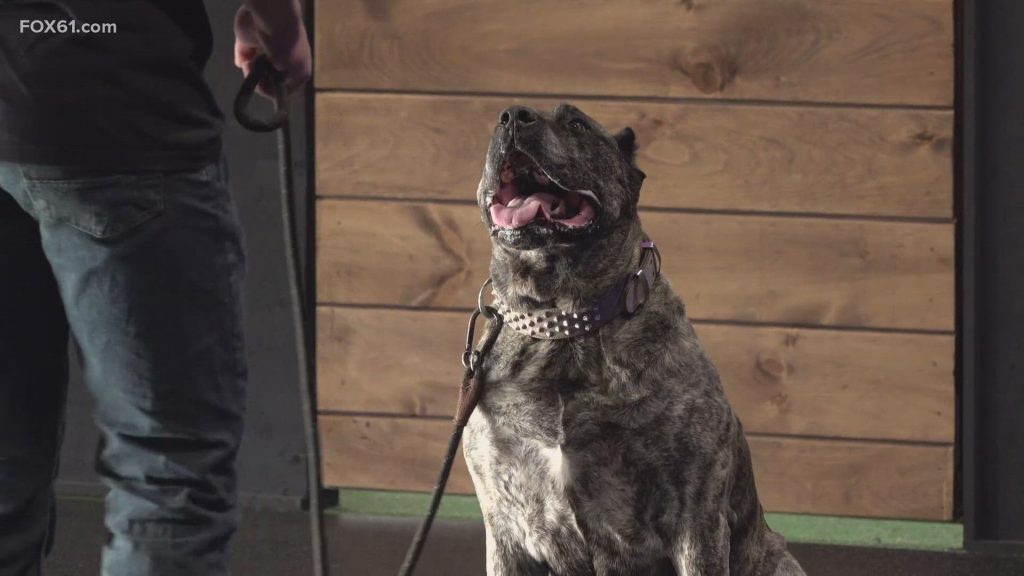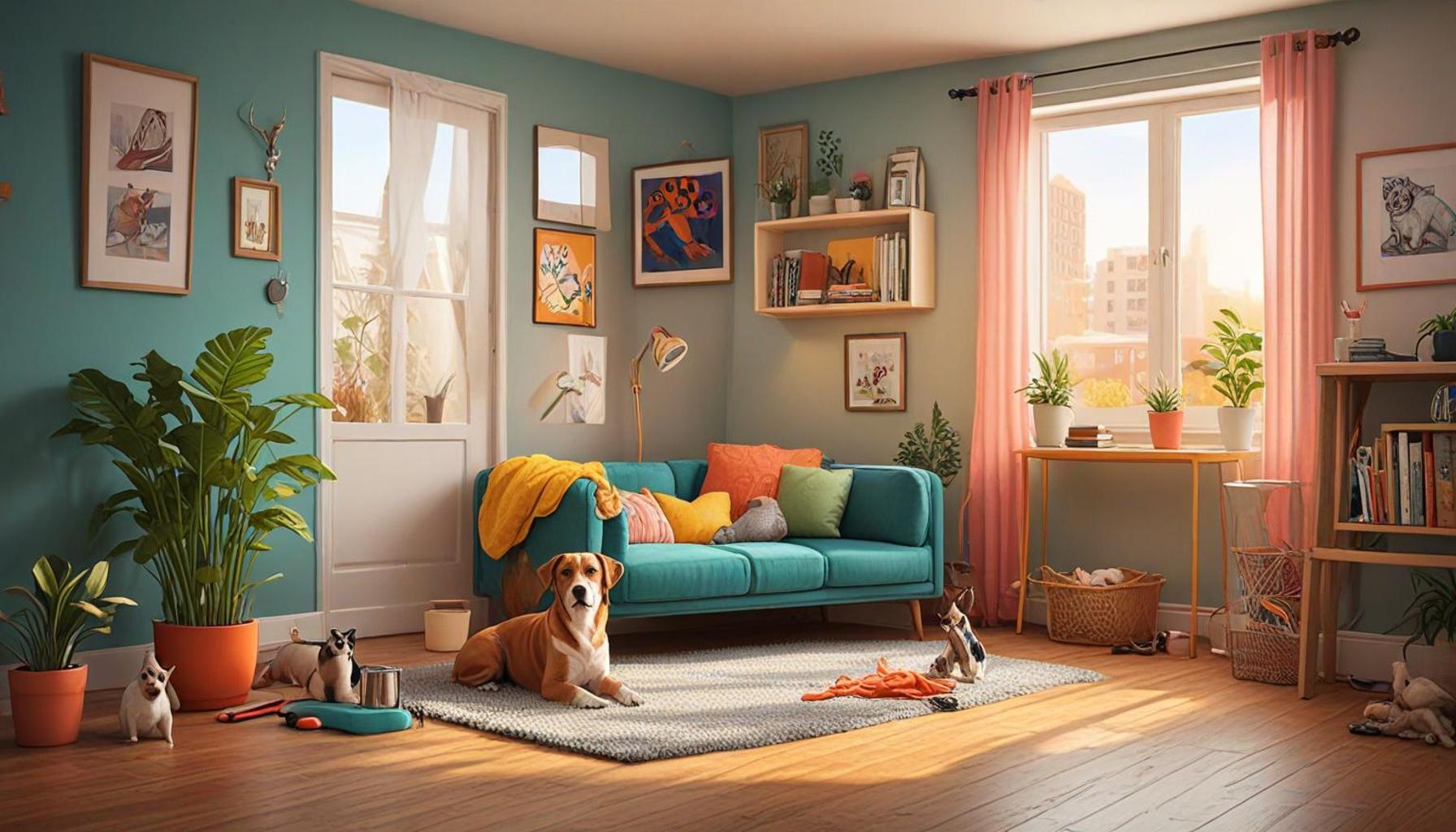Rehabilitation Techniques for Pets with Aggressive Behaviors

The Complex Nature of Aggression in Pets
Aggression in pets is a multifaceted issue that can develop from a range of emotional triggers and environmental factors. Just like humans, animals can respond aggressively to perceived threats, which may stem from fear, territorial instincts, or even past traumas that leave them feeling vulnerable. This can lead to significant challenges in caregiving, especially in countries like Nigeria, where pets are often considered beloved family members. Understanding the roots of aggressive behavior in pets is essential to nurturing their well-being and maintaining harmonious relationships with their caregivers.
Recognizing signs of aggression early on is crucial for effective intervention. Common indicators of aggression include:
- Growling or snarling, which can indicate displeasure or a warning.
- Baring teeth, often a prelude to biting, and an unmistakable sign of discomfort.
- A stiff tail or raised hackles, indicating high arousal or stress.
It’s important to note that these cues can differ among breeds and individual pets. For instance, a German Shepherd may show aggressive tendencies differently than a Chihuahua due to their inherent disposition and physical differences. By mastering the art of reading these signals, Nigerian pet owners can more effectively tailor their strategies for rehabilitation.
Effective Rehabilitation Techniques
Addressing aggressive behavior requires a thoughtful and patient approach. Below are several essential strategies that can facilitate a successful rehabilitation process:
- Desensitization to triggers involves gradually exposing the pet to the stimuli that provoke aggression in a controlled manner, allowing them to form a more positive association over time. For example, if a dog is aggressive towards strangers, introducing it to new people from a distance and gradually decreasing the space can help.
- Positive reinforcement training focuses on rewarding desired behaviors rather than punishing undesirable ones. This method encourages pets to associate good behavior with positive outcomes, such as treats or praise, fostering a cooperative bond with their caregiver.
- Professional behavior modification may be necessary for more serious cases of aggression. Seeking help from a certified animal behaviorist or trainer who understands the cultural nuances and local dog breeds in Nigeria can provide personalized insights that are crucial for progress.
Implementing these strategies can lead to significant changes in a pet’s behavior over time, transforming aggressive tendencies into calmer, more manageable responses. While it may take time and consistent effort, the potential for improvement is immense. Patience and knowledge are vital as pet owners and their furry companions navigate the complexities of aggression together, creating a more loving environment that nurtures trust and understanding.

ADDITIONAL INSIGHTS: Expand your understanding here
The Complex Nature of Aggression in Pets
The behavior of pets, particularly when it manifests as aggression, is often the result of a myriad of underlying factors. In Nigeria, as societal attitudes toward pet care evolve, it’s increasingly important to understand these roots to successfully rehabilitate pets experiencing aggression. Recognizing and addressing the intricate reasons behind such behavior not only aids in the treatment of the animal but also ensures safer interactions with humans and other animals alike.
Among the key factors influencing aggression are:
- Fear or Anxiety: This is perhaps one of the most common triggers for aggression in pets. Animals often resort to aggressive defensive mechanisms when they feel threatened. For example, a dog that has experienced neglect might react violently when approached by unfamiliar faces, as it associates new humans with previous trauma. In urban areas like Lagos, where sounds, crowds, and other stimuli can be overwhelming, this fear could be exacerbated, impacting how pets react to daily life.
- Territoriality: Many pets are innately territorial, and this protective instinct can lead to aggressive behavior when they perceive their space is being invaded. For instance, if a new puppy is introduced to a household without proper introduction, the resident dog may become aggressive in an attempt to assert dominance over what it views as its territory. In Nigeria, where family structures can be large and inclusive, the introduction of new family members as pets can lead to conflicts if not managed well.
- Lack of Socialization: Proper socialization is crucial during a pet’s early developmental stages. Pets that miss out on these formative interactions may fail to learn appropriate behavior, leading to maladaptive responses when confronted with new people or situations. For example, a cat that has only ever known the four walls of its owner’s home may react negatively when faced with visitors, resulting in hissing or swatting as it tries to communicate discomfort.
By understanding these triggers, pet owners can better implement effective rehabilitation techniques. Sensitivity to local norms and practices regarding pets also plays a vital role. In some Nigerian communities, misconceptions about specific dog breeds can lead to unwarranted fear and prejudice, often overlooking the individual animal’s behavior.
Creating a Constructive Rehabilitation Environment
Establishing a nurturing and secure environment is essential to the rehabilitation journey of an aggressive pet. This environment encourages healing and fosters positive behavioral changes. Here are some strategies to ensure a supportive setting:
- Creating a Calm Space: Designate a specific area in the home as a safe zone where the pet can retreat when feeling stressed. This space can be enhanced with soft bedding and favorite toys to promote relaxation.
- Consistent Routines: Pets thrive on routine. Establishing a reliable schedule for meals, walks, and playtime can significantly reduce feelings of anxiety, allowing pets to feel more in control of their environment. For example, a pet that knows when to expect its meals is less likely to exhibit food-related aggression.
- Controlled Exposure: Gradually introducing pets to perceived triggers can prevent aggressive outbursts. This method, often referred to as desensitization, may involve positive reinforcement techniques such as treats and praise when the pet remains calm in stressful situations.
In summary, pet owners in Nigeria can make substantial progress in rehabilitating aggressive animals by understanding the causes of their behavior and fostering a safe environment. The journey from aggression to calmness is not instantaneous; it requires education, patience, and a commitment to creating a supportive atmosphere. This ultimately cultivates a harmonious relationship between pets and their owners, benefiting both parties in the long run.
Understanding Rehabilitation Techniques for Pets with Aggressive Behaviors
Rehabilitating pets that exhibit aggressive behaviors requires a multifaceted approach combining behavioral training and environmental management. The significance of early intervention cannot be overstated, as addressing aggressive tendencies at the first signs can lead to more effective outcomes. One key technique involves positive reinforcement, where desirable behaviors are rewarded with treats, praise, or play, reinforcing good behavior rather than punishing aggression. This method builds trust between the pet and owner while lowering stress and anxiety levels in the animal.Another crucial aspect of rehabilitation is desensitization and counter-conditioning. This technique gradually exposes the pet to specific triggers—such as strangers or other animals—while associating those triggers with positive experiences. Over time, the pet learns to respond more calmly to situations that previously induced aggressive reactions. Implementing structured socialization sessions can also be essential. These controlled interactions with other pets or people allow the aggressive pet to learn proper behaviors in a safe environment, promoting confidence and reducing fear-based aggression. Environmental management goes hand in hand with these techniques. Creating a safe space for the pet, free from stressors, can facilitate a more relaxed state, promoting better behavioral outcomes. Consistency in training routines and commands establishes a reliable framework for the pet, enhancing their ability to comprehend expected behaviors. Combining these techniques with patience and commitment from the owner is vital for long-term success. Understanding that behavioral rehabilitation is a process—often requiring professional help from certified trainers or behaviorists—can lead to more effective strategies tailored to each unique case. To further explore the benefits of rehabilitation techniques for pets with aggressive behaviors, consider evaluating your pet’s specific triggers and engaging in professional training sessions that focus on personalized behavioral plans.
| Training Technique | Benefits |
|---|---|
| Positive Reinforcement | Encourages desired behavior and builds trust between pet and owner. |
| Desensitization | Reduces fear-based aggression by creating positive associations with triggers. |
Implementing these rehabilitative methods not only helps in curbing aggressive behaviors but also enhances the overall well-being of your pet.
LEARN MORE: This related article may interest you
Effective Rehabilitation Techniques for Aggressive Pets
Addressing aggressive behaviors in pets requires a multifaceted approach, often combining various techniques tailored to the individual animal’s needs. The rehabilitation process is not solely focused on correcting aggressive behavior but also on enhancing the overall well-being of the pet. Below are some prominent rehabilitation techniques that can be beneficial for pet owners navigating this complex issue.
Positive Reinforcement Training
Positive reinforcement is a widely recognized and effective training method that encourages desirable behaviors through rewards. Instead of focusing on punishing aggressive actions, this technique promotes good behavior by associating positive outcomes with desired actions. For instance, every time a dog refrains from barking aggressively at a passerby, it could be rewarded with treats or praise. Over time, the pet learns to associate calm behavior with positive feedback, significantly reducing its aggressive instincts.
In Nigeria, incorporating local treats and praise that resonate with the pet’s personality can enhance the effectiveness of positive reinforcement. For example, if a dog typically enjoys a specific type of meat from the local market, using that as a reward can create a stronger bond and encourage better behavior.
Behavior Modification Techniques
Behavior modification encompasses a range of strategies aimed at altering a pet’s response to stimuli that trigger aggression. One effective method is the use of counter-conditioning, which involves changing the pet’s emotional response to a fear-inducing situation. For example, if a dog shows aggression towards strangers, the owner can begin to introduce the dog to new people in a controlled manner, rewarding the dog with treats when it remains calm. This gradual exposure helps the pet form a new, positive association with strangers.
Another useful technique is desensitization, where the pet is slowly exposed to the trigger at a distance that doesn’t provoke aggressive behavior. By continuously rewarding calm behavior in the presence of the trigger, the owner can gradually reduce the pet’s sensitivity to the stimulus, leading to less aggressive reactions over time.
Utilizing Professional Help
When dealing with severe cases of aggression, seeking the assistance of a professional animal behaviorist or a certified trainer can be incredibly beneficial. These experts have specialized knowledge and tools to assess the pet’s behavior accurately and devise a customized rehabilitation program. They can provide hands-on training sessions and ongoing support as the owner implements the techniques at home.
Moreover, there are also veterinary behavioral specialists who can evaluate whether medical issues might be contributing to aggressive behavior. Sometimes aggression can stem from pain or illness, requiring medical intervention alongside behavioral training. For pet owners in Nigeria, this could include consulting local veterinary clinics that may offer behavior consultations or even hosting workshops on animal training and behavior management.
Community Support and Education
Building a network with other pet owners can be invaluable for sharing experiences and strategies used in aggression rehabilitation. Community-driven initiatives, local workshops, or pet fairs can also provide educational resources. These platforms not only enhance knowledge about pet care but also foster a sense of understanding in communities where pets are increasingly seen as family members. In cities like Abuja and Port Harcourt, local forums or pet-centric events where experts share insights could further enhance the effectiveness of rehabilitation techniques.
By employing these rehabilitation techniques and engaging with professional help, pet owners in Nigeria are empowered to create a safer and more harmonious environment for their pets, ultimately leading to a stronger bond between them. These methods, when executed with consistency and patience, can yield positive transformations while reshaping the perception of aggressive behavior in vulnerable pets.
YOU MAY ALSO LIKE: Read read another article
Conclusion: Transforming Aggression into Companionship
In addressing the complex issue of aggressive behavior in pets, it is crucial to understand that valuable rehabilitation techniques not only focus on correcting these behaviors but also on fostering a deeper connection between pets and their owners. The combination of positive reinforcement training, behavior modification techniques, and engaging professional help creates a comprehensive framework that empowers pet owners in Nigeria to tackle problematic aggression effectively.
Utilizing community support and education through local workshops and forums enhances knowledge and builds a sense of solidarity among pet owners. As residents in Nigerian cities like Lagos and Enugu take proactive measures to understand their pets’ behaviors, they can foster safer environments that nurture companionship rather than fear. This community engagement becomes vital, as it allows owners to share experiences, strategies, and insights that can be beneficial to others facing similar challenges.
Furthermore, understanding the importance of a pet’s well-being, along with addressing any underlying medical issues, adds another layer to this rehabilitation journey. As our pets become more integrated into our lives, it is essential to recognize that their behavioral issues often stem from a place of fear or distress rather than malice. By adopting a patient and informed approach, pet owners can gently guide their companions towards positive behaviors, ensuring a more harmonious living situation.
Ultimately, the rehabilitation of aggressive behaviors in pets is an ongoing process that demands commitment, patience, and love. When executed thoughtfully, these strategies not only transform aggressive tendencies but also cultivate a stronger bond, enriching the relationship between pets and their families for years to come.


